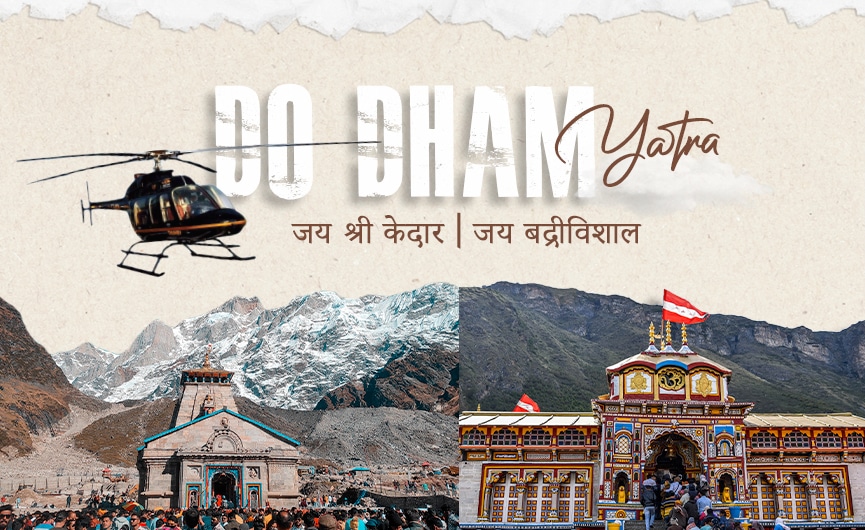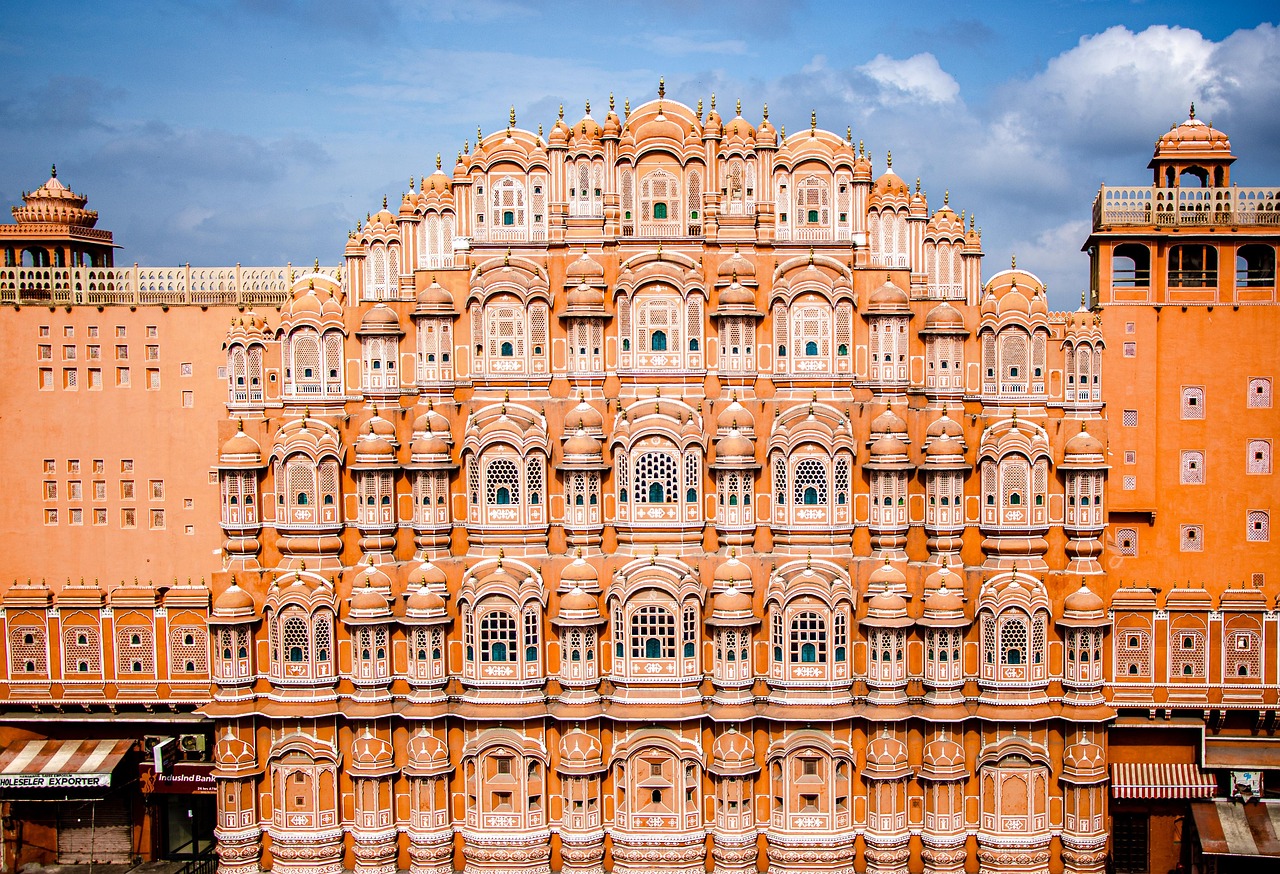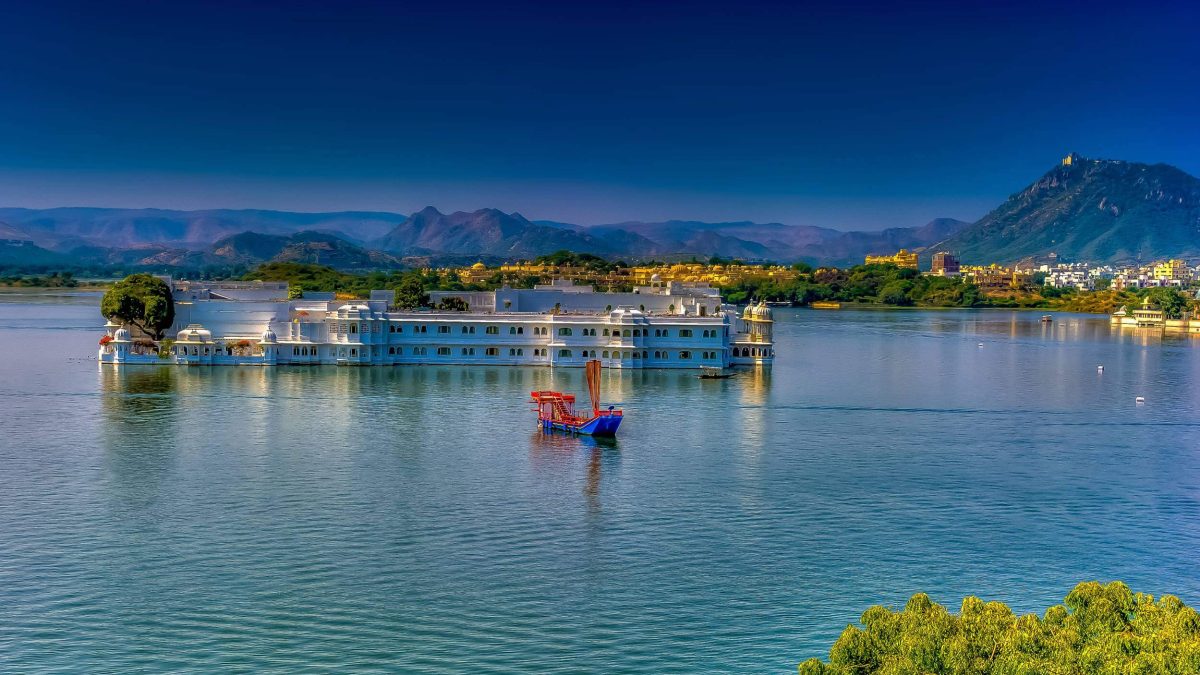Destinations Covered: Delhi - Jaipur - Agra - Lucknow - Varanasi - Delhi
DAY 01: ARRIVE IN DELHI
Welcome to India!
Arrive at Delhi’s Indira Gandhi International Airport. You will meet with Noble Escape Journeys representative with traditional and sacred marigold flower garland. Transfer to your hotel where a traditional welcome with aarti & tika ceremony awaits you. Delhi stands as the capital of Modern India. Here you can see the mingling of the Old and New India, the ancient and the modern. Delhi has seen the rise and fall of many emperors, which has left behind a plethora of monuments that commemorate the grandeur and glory of bygone ages.
Room available from 1400 hrs onwards – Early checking is subject to availability.
Overnight at Hotel.
DAY 02: DELHI OF SIGHTSEEING
After breakfast proceed for Old Delhi sightseeing tour.
Old Delhi: - After breakfast, visit Old Delhi. This was the former Imperial capital of the Mughal Emperor, though very little remains of the grandeur of the Emperor Shah Jahan’s city. Old Delhi’s backbone is Chandni Chowk. Today, it is a busy market, selling an extraordinary variety of items – silver, jewellery, aromatic spices, leather, fruit and vegetables.
Rickshaw ride in Old Delhi followed by a visit to Jama Masjid: - Here, you will enjoy the rickshaw ride tour through the narrow bylanes of Chandni Chowk. Also visit one of India’s largest Mosque, Jama Masjid. This mosque is amongst the final architectural extravagances of Shah Jahan. Begun in 1644, the mosque was not completed until 1658. It has three great gateways, four angle towers and two minarets standing 40m high. It was constructed of alternating vertical strips of red sandstone and white marble.
Raj Ghat: - Afterwards, board your waiting vehicle and drive to Raj Ghat. A simple square platform of black marble marks the spot where Mahatma Gandhi was cremated following his assassination in 1948. It is surrounded by a beautiful park with labelled trees planted by notable personalities such as Queen Elizabeth II, USA President Eisenhower, Ho Chi Minh and various others.
Later proceed for New Delhi sightseeing tour. Visit Humayun’s Tomb, (UNESCO world heritage site) the earliest example of Mughal architecture in India. Recently renovated with the gardens restored to their former splendour, and fine fountains, it is a very attractive site. Architecturally, the mausoleum drew its inspiration from the styles prevalent in Samarkand, and the design of the Taj Mahal is based on this tomb.
Time at leisure for lunch at local restaurant Near India gate. (Direct payment)
From here, drive to Qutub Minar complex, which has many historic monuments. The first mosque in India – The Quwwat-Ul- Islam – built from the dressed and carved stones of demolished temples lies in this complex. It establishes the political victory of Islam in northern India. The Qutub Minar itself was begun in 1199 by Qutub-ud-din Aibak and was completed by his successors. This fluted elegant tower is decorated with elegant balconies and carvings.
Later drive past India Gate, Presidential palace, Parliament house Lutyen Delhi and get a chance to admire the colonial grandeurs and the important government complexes of the country. Named after the leading British architect Edwin Lutyens, who was responsible for much of the architectural design and building when India was part of the British Empire.
Overnight stay at the Hotel.
DAY 03: DRIVE FROM DELHI TO JAIPUR (256 KMS/ 05-HOUR DRIVE)
Today after breakfast drive to Jaipur.
Upon arrival checkin at the hotel.
Rest of the day free at leisure.
Overnight at Hotel.
DAY 04: JAIPUR
This morning after breakfast, proceed for an excursion to Amber fort (UNESCO world heritage site). Ascend the fort on a Jeep. Amber is a classic, romantic Rajasthani Fort Palace. The rugged, time-ravaged walls of the fort belie the beauty inside – a paradise of sorts. Miniatures painted on the walls depict hunting and war scenes, as well as festivals. Precious stones and mirrors are embedded in the plaster.
On the way to Amber Fort, you will have a brief photography stop at Hawa Mahal – the Palace of Winds.
Continue with your sightseeing tour of the city. Visit Maharaja’s City Palace, the former Royal residence. Part of it is now converted into a museum. A small portion is still used by the Royal family of Jaipur.
This palace also includes the famous 'Chandra Mahal' and 'Mubarak Mahal', and other buildings which form a part of the palace complex. There are many courtyards and buildings. The palace was built between 1729 and 1732 AD by Sawai Jai Singh II. He ruled over Amer, and planned and built the outer walls of the palace, while later rulers added to the architecture of this palace. These additions have been known to take place right up to the 20th century. Today, the 'Chandra Mahal' has been turned into a museum, which is home to unique handcrafted products, various uniforms of the rulers and many more things pertaining to the royal heritage of the City Palace.
Free time for lunch at local restaurants in the vicinity on direct payment.
Post lunch visit the Jantar Mantar, (UNESCO world heritage site) which is home to brilliant medieval-era geometric devices for tracking constellations, observing the orbits around the sun, measuring time and many other pursuits. This UNESCO World Heritage Site is one of the largest astronomical observatories on the planet. Even some of the devices here are the largest among other similar devices ever built.
Later drive back to hotel.
Ovenright stay at Hotel
DAY 05: JAIPUR – AGRA (245 KMS / 05 HRS)
After breakfast at the hotel, drive to Agra
On arrival, check in to the hotel
Agra rose to fame in the 17th century as the capital of the Mughal Empire and was beautified with gardens, waterfalls, bathhouses and canals. Over time, the city turned into a thriving crafts centre, also famous for marble inlay work and carpet production. In the afternoon, go out on a sightseeing tour of Agra, which includes a visit to the awe-inspiring Taj Mahal. Built in the mid-17th century by the heartbroken Shah Jahan following the death in childbirth of his queen, Mumtaz Mahal, this mausoleum is an eternal love poem written in stone. During the visit, you can admire the intricacy of the work of the 20,000 craftsmen who were brought from Persia, Turkey, France and Italy to build this astonishing monument. (Closed on Fridays)
Visit Agra Fort, whose forbidding red sandstone battlements hide a number of majestic Mughal palaces. Explore the delightful Diwan-i-Am (Hall of Public Audience) where the emperor once sat on his throne to address his people, and the Diwan-i-Khas (Hall of Private Audience) where he hosted kings and foreign dignitaries. The white marble Mina Masjid (Heavenly Mosque) stands in contrast to the rest of the Red Fort.
Overnight at the hotel
DAY 06: AGRA –– LUCKNOW (336 KMS / 4.5 HRS)
After breakfast at the hotel, drive to Lucknow, known for its cuisine and fascinating cultural heritage.
On arrival, check in to the hotel.
Lucknow is one of those few places that cling on to their original character and refuse to let go even in the face of the fiercest of the storms of change. Majestic old monuments all but scream out the tales of an ephemeral yet rich tangible past. Descendants of royal chefs still serve cuisine prepared from recipes secretly handed down over generations. The tradition of Tehzeeb (courtesy) inculcated by the Nawabs (royal retainers) of the yesteryears often springs forth from the small gestures and language of the folks living here. Small wonder that all the sights, smells and sounds of Lucknow connive to become obsessive yet endearing memories.
Overnight at the hotel
DAY 07: IN LUCKNOW
This morning, after breakfast, start with your sightseeing tour of Lucknow- the city of Nawabs! Located in what was historically known as the Awadh region, Lucknow has always been a multicultural city. Courtly manners, beautiful gardens, poetry, music, and fine cuisine patronized by the Persia-influenced Nawabs of the city characterize the city. Present day Lucknow is a vibrant city that is witnessing an economic boom and is among the top ten fastest growing non-major-metropolitan cities of India. Lucknow and the region around it are also known for a wide variety of mangoes and delectable melons. Lucknow is also famous for its small scale industries like the oil based perfumes ittar, kite making, and unique styles of embroidery, namely Chikan and Lakhnawi Zardosi.
Sightseeing of Lucknow includes visit to the exquisitely decorated Rumi Darwaza, also known as the Turkish Gate, the magnificent Bara Immambara, the Husainabad Immambara, and the Asafud-daula Immambara, which reflect the quintessence of Awadhi architecture. Visit the Picture Gallery, which houses a collection of life-size oil paintings of the Nawabs of Oudh and also visit Chattar Manzil, Moti Mahal and the British Raj Residency, which was the site of Mutiny in 1857.
Overnight at the hotel
DAY 08: LUCKNOW – VARANASI (TRAIN)
Today, early morning transfer to railway station to board train for Varanasi.
Lucknow / Varanasi LKO BSB Intercity Express 07:00/13:30 hours
Meeting and assistance on arrival and transfer to hotel for check in
Evening visit to the Ganges to witness the Aarti ceremony.
Aarti is said to have descended from the Vedic concept of fire rituals. In the traditional Aarti ceremony, the flower represents the earth (solidity), the water and accompanying handkerchief correspond with the water element (liquidity), the lamp or candle represents the fire component (heat), the peacock fan conveys the precious quality of air (movement), and the yak-tail fan represents the subtle form of ether (space). The incense represents a purified state of mind, and one’s "intelligence" is offered through the adherence to rules of timing and order of offerings. Thus, one’s entire existence and all facets of material creation are symbolically offered to the Lord via the Aarti ceremony.
Overnight at the hotel.
DAY 09: IN VARANASI
Early morning boat ride on river Ganges. The ride gives you an unforgettable experience as you see the bathing and cremation sites. The boat ride takes you till Manikarnika Ghat- the cremation ghat and back. After boat ride, take a small walking tour through the narrow lanes of Varanasi passing by Vishwanath temple- also called The Golden temple because of the gold-plating on its roof and Durga temple (Non Hindus are not allowed in the temple). Later, return to the hotel for breakfast.
After breakfast, excursion to Sarnath, which is 10 km from Varanasi. Buddha preached his first sermon to five disciples at the Deer Park here, enshrining the principals of his teaching into laws. The Dhamek Stupa Marks the location of a once resplendent monastery. A large complex of ruined monasteries covers the area north of the stupas. Some of the buildings belong to the Kushan and Gupta period. The first monk communities probably settled here in the 3rd century BC. Near the Dhamek Stupa is a new Monastery built by the Buddhist Mahabodhi Society.
The major events of Buddha’s life are depicted here in wall paintings by a Japanese artist. Sarnath has an interesting archaeological Museum, which has preserved the famous Sarnath pillar, whose capital forms India’s national emblem.
Overnight at the hotel.
DAY 10: VARANASI – DELHI (FLIGHT)
Today, in time, transfer to Varanasi airport to board the flight for Delhi
Varanasi – Delhi AI-405 12:50 / 14:30 hours
(Flight details may vary at the time of booking)
Meeting and assistance at airport and transfer to the hotel for check in.
Overnight at the hotel.
DAY 11: DEPARTURE DELHI
At the appropriate time, transfer to Delhi International Airport to board your onward flight.







